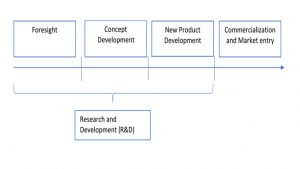Intellectual Property:
Refer to the creation of human beings such as inventions; literary and artistic works, designs and symbols, and images used in commerce. For these purposes, it principally consists of Copyrights, Related Rights of Copyright, Patent, Trademark, Trade-secret, Geographical Indication, and Variety of plants.
Intellectual Property can define as legal rights, existing under national and international law, assertible in respect of the products of human intellect and creativity. A more definition of intellectual property suggests that it comprises all those things which emanate from the exercise for the human brain, such as ideas, inventions, poems, designs, and micro-computers. Intellectual Property Rights (IPR) may have the ability to own and protect the products of human intellect.
Innovation:
If we enter the term Innovation to google, we could see that there are almost 700 million found. In a general way, we understand that Innovation is the introduction of something new, a new idea, method, or device.
The introduction of a new idea to the marketplace in the form of a new product or service or an improvement in organization or process successful exploitation of new ideas as an example of the innovative idea.
Innovation is creating value out of new ideas, new products, new services, or new ways of doing things and the creative force of humankind that allows the process of the world to advance improvement.
To sum up, Innovation can define as the process which leads to introduce new products or services to a commercial marketplace or the adoption of new ways of making products or services.
Diagram 1: Innovation Process

